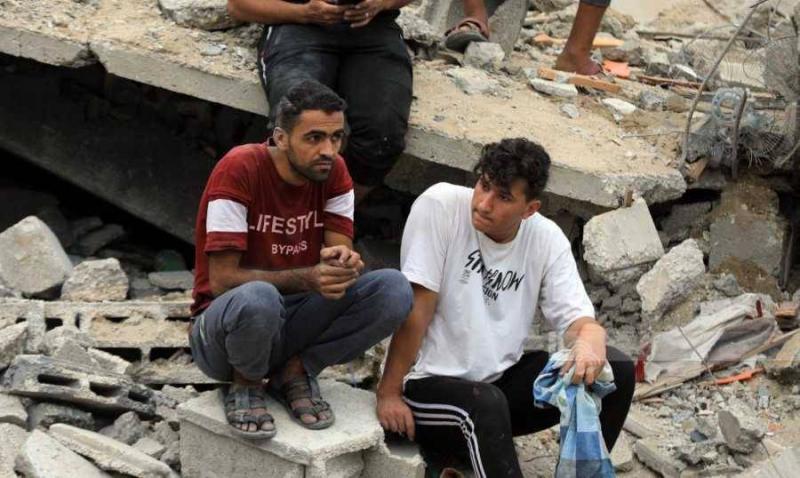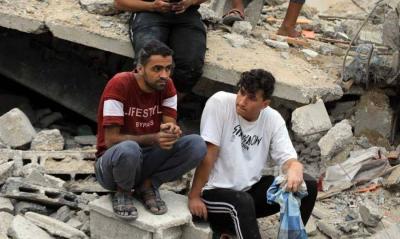Despite all the death and destruction that Gaza has endured, its residents feel as though the war has just begun. As soon as the temporary ceasefire in the region ended, the sounds of war machinery returned, and the casualty count was reactivated without pause. That brief ceasefire, lasting only seven days, was not an opportunity to catch a breath or gain some rest; rather, it served as a window for examining the rubble and searching for the bodies of victims to bury. With its conclusion, the emotions reminiscent of the pre-ceasefire phase have surged again for the people of Gaza. These are the same feelings the residents experienced on the first days of the war, and many believe that the worst is yet to come. The ongoing battles are more intense, taking place in the most populated areas of the Gaza Strip, including the neighborhoods of Shuja'iyya and Jabalia in the north and Khan Yunis in the south.
Israeli forces had postponed their assault in the neighborhoods of Shuja'iyya and Jabalia to a later phase, gradually initiating it over the past few days. In these areas, residential buildings are collapsing due to continuous Israeli shelling. On the ground, Israeli vehicles are attempting to push forward, while many residents remain in their homes, not evacuating to the southern part of the Gaza Strip, where battles are equally fierce. The Israeli army believes that the strongest arsenal of Hamas and the largest number of its fighters are in the Shuja'iyya and Jabalia areas, which are described as strongholds of the movement. Consequently, Israel sees this battle as unlikely to be straightforward and anticipates many complications.
While an Israeli army spokesperson announced the deaths of two officers and three soldiers in the two areas during clashes with armed Palestinian factions, eyewitnesses told the Arab World News Agency (AWP) that Israeli forces are targeting entire residential blocks in both areas, leveling them to clear the way for their vehicles. Approximately 200,000 Palestinians reside in Jabalia city alone, according to the latest statistics from the Palestinian Central Bureau of Statistics, while the population of the Jabalia refugee camp is about 56,000.
East Gaza, where the Shuja'iyya neighborhood is the largest, has a population of around 350,000, including the southern Shuja'iyya (Turkmen) and northern Shuja'iyya (new neighborhood or Kurds neighborhood), alongside the neighborhoods of al-Daraj, al-Tuffah, and al-Zeitoun. The residents of Shuja'iyya, aware of their neighborhood's historical significance, describe it as the guardian of the Gaza Strip. In the northern part of the neighborhood lies a World War I cemetery where thousands of soldiers are buried. The persistent and intense Israeli bombardment reminds Gazans of that cemetery, as they fear their entire neighborhood could become a graveyard for those who chose to stay in their homes rather than flee.
Residents of Shuja'iyya believe that the destruction of their neighborhood represents an old vendetta, stemming from the success of Palestinian factions in 2014 when they captured Israeli soldier Shaul Aron during their resistance to an Israeli ground incursion in the neighborhood. At that time, Israeli artillery heavily bombarded the area, resulting in the deaths of around 75 Palestinians, signaling to Israeli Defense Minister Yoav Galant, who visited the invading forces, that the Golani Brigade was on a mission to settle scores, declaring they would not leave Shuja'iyya until Hamas’s capabilities were destroyed.
According to observed movements of vehicles, this incursion did not take place via the usual entry point commonly used by Israeli forces from the far east of Shuja'iyya, closest to the border area known as the Gaza Envelope, but rather from the southwestern part of the neighborhood. Israeli media reported that this tactic aimed to avoid anticipated Hamas preparations in border areas, specifically regarding booby-trapped tunnels, weaponry, and stationed units. A map of the incursion indicates the Israeli forces began entering the neighborhood from the Shuja'iyya intersection, advancing into adjacent neighborhoods, where they established positions and snipers took positions in nearby buildings.
Israeli estimates suggest that the completion of operations in the Shuja'iyya and Jabalia neighborhoods may require time until the end of this month. So far, Israel has failed to present the victorious image it seeks, making a ceasefire during this period unlikely due to internal Israeli convictions that it has not achieved the war objectives it set. The image of victory that Israel aspires to may involve assassinating a high-ranking Hamas leader, such as Yahya Sinwar, or capturing him, or perhaps achieving total control by Israeli vehicles over the entirety of the Gaza Strip.
Israel is aware that in its internal circles, the images previously shown were not what they were looking for, representing the most they could achieve before the ceasefire. Therefore, future battles are expected to be more intense in the search for the desired image. The Israeli Broadcasting Authority stated that the battles would occur on multiple fronts simultaneously.
It appears from the ground reality that Israel has begun entering the more challenging areas at the same time. Israel has set a new objective to achieve in this phase of the war: the destruction of the tunnels used by Hamas. The Wall Street Journal reported that Israel has built a system of large pumps that could be used to flood the network of Hamas tunnels underground in the Gaza Strip with seawater. According to the report, a group of pumps has been assembled, consisting of at least five large water pumps, north of the Beach refugee camp in northern Gaza.
These pumps are expected to draw water from the Mediterranean Sea, flooding the tunnels with thousands of cubic meters of water every hour, which will lead to their submersion within weeks. However, it has not yet been decided in Israel whether this operation will be carried out.
All these developments add further complexities to the conduct of the war, and thus Israel may succeed in applying pressure on Hamas to release other detainees on terms that are not complicated for the Israeli government. Additionally, Israel has not dropped its declared goal of establishing a buffer zone in the Gaza Strip. Therefore, more military operations may lead to the establishment of such a zone after displacing its residents, especially as the international handling of these terms has begun to change. The United States, while rejecting the forced displacement of Palestinians, will not oppose voluntary migration, a sentiment echoed by several international officials.




